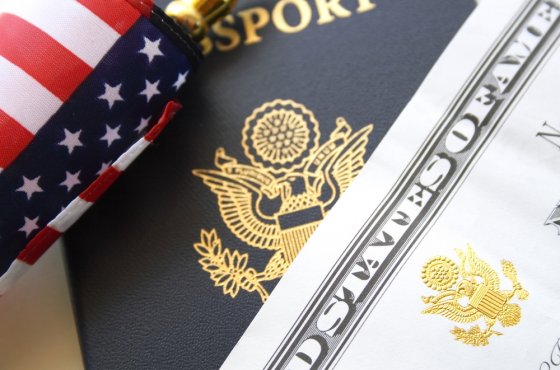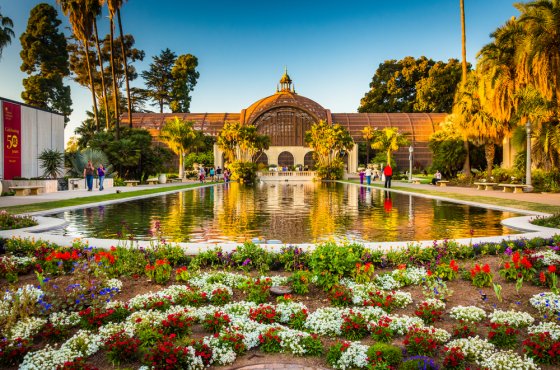Seven Popular Christmas Traditions That Will Surprise You
If you look at the origins of Christmas traditions, you will be surprised that many of them are much newer than you might expect. Where did many of our favorite Christmas traditions come from? Dictionary.

Photo: IStock
Christmas is a truly magical time of good mood. It's a special time of the year! We have Christmas carols, elves, and of course the timeless traditions of decorating the tree, hanging garlands and reminding children to behave well so that Santa Claus will give them gifts.
1. Red and green
When we think of Christmas, we often think of red and green ornaments, red and green sweaters—those two colors. According to most researchers, the association of red and green colors with Christmas can be traced back to a specific plant: the holly.
On the subject: Santa is delivering gifts again, and you can follow him with a special tracker
Holly is still common around Christmas time today and its bright green leaves and red berries are hard to miss. Research shows that the Celtic peoples believed that holly or holly trees brought good luck, so they decorated their homes with them in winter. Holly is a plant that blooms in winter and may be one of the few signs of greenery during the season.
Most agree that holly plants have helped make red and green synonymous with Christmas. But a large soda company also helped. In the 1930s, Coca-Cola began a new advertising campaign that showed Santa Claus enjoying Coca-Cola products. This Santa, created especially for the commercial, wore a bright red suit and often posed in front of green Christmas trees. This particular image has helped cement red and green as the colors of Christmas in popular culture.
2. Santa
It's hard to compete with a guy who gives gifts to the whole world every year. Santa Claus is such a legendary figure that countless myths and traditions have sprung up around him. After all, we're all afraid of being on his infamous naughty list, and no self-respecting mall would be caught off guard without an annual Santa. There is even international tension between Canada and Finland over which country can rightfully claim Santa as a citizen.
But who is Santa and how did his story begin? The man behind the legends of Santa is actually a Christian saint who lived in the third century. Today he is known as Saint Nicholas. Saint Nicholas was famous for his kindness and generosity, he liked to secretly give gifts to children. He will become a local folk hero, and stories about him will turn into complex myths and legends over the centuries. With each new narrative, different cultures and peoples brought their own flavor to the history of Nicholas. Over time, these characters bore little resemblance to the original Saint Nicholas and became completely new figures, separate from him. Today, in many countries of the world, stories are told about heroes who give gifts to children at Christmas.
The Santa Claus that Americans know today is said to have come from the Dutch tales of Sinterklaas, a character based on the Dutch legends of Saint Nicholas. However, according to American tradition, this character will eventually become uniquely American, as it will mix elements from different cultures and even mix aspects of the British Santa Claus. The image of Santa we know today is often attributed to cartoonist Thomas Nast's images that were featured in 19th century magazines. Nast's drawings of a fat, cheerful old man in a red and white robe inspired later depictions of Santa, such as those used in popular Coca-Cola ads.
3. Santa's elves
As any Santa Claus expert knows, Santa's bag is full of toys made by elves who live with him at the North Pole.
Elves can be traced back to the ancient Germanic religions. According to the legends, elves were small dwarf creatures with pointed ears that protected good people from evil ones. Like fairies, elves supposedly had magical powers and could often be mischievous tricksters. Santa Claus himself is even mentioned as an elf in the famous 1823 poem A Visit from St. Nicholas, also commonly known as It Was the Night Before Christmas. These elves are much shorter and less haughty than the tall and elegant elves you see in fantasy stories.
But when did the Christmas elves start working with Santa? Santa's earliest popular association with elves may come from an 1857 story in Harper's Weekly called "The Miracles of Santa Claus". The story was about Santa Claus and claimed that "he keeps a lot of elves at work" who make toys. The elves then featured prominently in the classic 1964 television series Rudolph the Red Nosed Reindeer.
In 2005, a special elf joined Santa's team. Mother-daughter duo Carole Eborsold and Chanda Bell introduced the little elf in their book The Elf on the Shelf: A Christmas Tradition.
4 Santa's Reindeer
To deliver all these toys, Santa rides a magical sleigh pulled by eight flying reindeer. These deer are called Dasher (Swift), Dancer (Dancer), Prenser (Rider), Vixen (Squishy), Cupid, Comet, Blitzen (Lightning) and Donner (Thunder). But where did these reindeer come from?
Like much of the Santa Claus lore, the original eight reindeer are most often attributed to the same 1823 poem "The Visit of St. Nicholas", which states that Santa himself was a fat, jolly elf. The poem says that Santa rides on a "miniature sleigh" pulled by "eight tiny reindeer". The poem is also the source for the names of the original eight reindeer.
But do you remember the most famous reindeer? Rudolf and his famous nose did not play games with the first reindeer. Rudolph was created by writer Robert L. May, who wrote his story in a 1939 Christmas collection. The collection was used in an advertising campaign for a department store. Millions of books about Rudolph have been sold. The red-nosed Rudolph became a major Christmas symbol thanks to the hugely popular song "Rudolf the Red-nosed Reindeer" (1939), written by songwriter Johnny Marks.
5. Socks over the fireplace
Admittedly, this is one of the strangest Christmas traditions. Children are taught to hang socks over the fireplace for Santa to fill with gifts during his holiday home invasion. This tradition goes back to Saint Nicholas again.
Like the article? Support ForumDaily!?
According to folk legend, the poor widower had three daughters who did not have enough money to provide themselves with a dowry. Since the fate of unmarried women at that time was usually not happy, St. Nicholas decided to help. One night, Saint Nicholas quietly threw sacks of gold into the family's house. They say that the gifts got into the girls' stockings, which, after washing, dried over the fireplace. This story of a happy accident spread, and pretty soon everyone was leaving their socks over the fireplace in the hope that St. Nicholas would visit them too.
6. Christmas trees
A beautifully decorated Christmas tree, real or artificial, can often be found in any home. Decorating buildings with trees in winter is a practice dating back to ancient peoples such as the Romans and Egyptians, who often used trees to add beauty to shrines or temples.
However, the modern Christmas tree comes from German medieval traditions. On December 24, the Germans decorated the Christmas tree in their homes to celebrate the feast of Adam and Eve. Over time, these trees began to be used to celebrate the Nativity of Christ. Although the tradition remained popular in Germany, the Christmas tree did not spread to the rest of Europe until the 19th century, during the reign of Queen Victoria. Victoria, whose mother was German, and her German-born husband, Prince Albert, were fans of the tradition and kept a beautifully decorated Christmas tree at Windsor Castle. Victoria and Albert were very popular, so Christmas trees flourished all over Britain. Americans, who were already clearly obsessed with the royal family, saw the Victoria tree in photographs published in popular magazines, and Christmas trees also became fashionable in America.
7. Christmas carols
Carols are actually older than Christmas itself, as the followers of ancient pagan religions sang songs in honor of the winter solstice. Christian priests loved these songs, but disliked their secular approach.
Most sources agree that the first Christmas carol ever sung was "Angel's Hymn" in 129 AD. This was the result of the desire of the Bishop of Rome to move the celebration of the winter solstice away from pagan rituals. While Christmas carols were popular among the clergy, the Christian population, who mostly did not understand Latin texts, were less enthusiastic about them. The wider acceptance of Christmas carols was a result of the popularity of nativity scenes. When nativity scenes were performed, they were often accompanied by songs in local languages. This meant that the audience could actually understand the words and join in the singing.
You may be interested in: top New York news, stories of our immigrants, and helpful tips about life in the Big Apple - read it all on ForumDaily New Y.
As for caroling at home, this is, in fact, a newer phenomenon. During the Victorian era, Christmas carols merged with an earlier English tradition that included visiting neighbors and wishing them good luck. The fusion of these two traditions led to the era of Christmas caroling, which is why many popular Christmas carols are still sung today.
Read also on ForumDaily:
California residents could visit ancient Bethlehem on Christmas Eve
Word of the week: 10 non-obvious meanings of the phrasal verb break
Subscribe to ForumDaily on Google NewsDo you want more important and interesting news about life in the USA and immigration to America? — support us donate! Also subscribe to our page Facebook. Select the “Priority in display” option and read us first. Also, don't forget to subscribe to our РєР ° РЅР ° Р »РІ Telegram and Instagram- there is a lot of interesting things there. And join thousands of readers ForumDaily New York — there you will find a lot of interesting and positive information about life in the metropolis.











